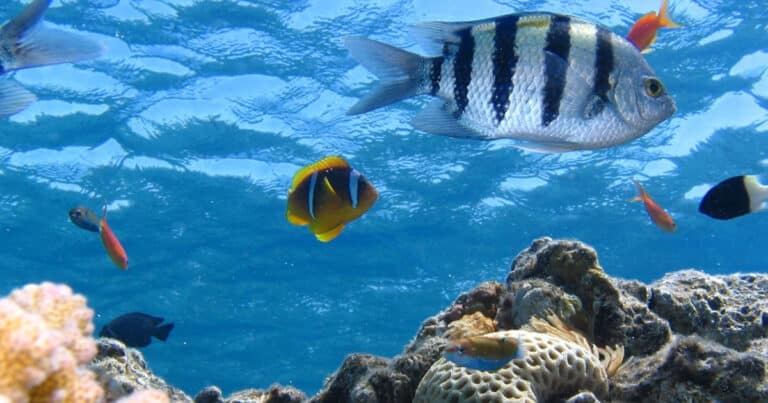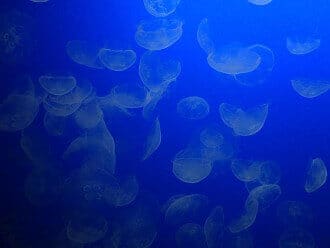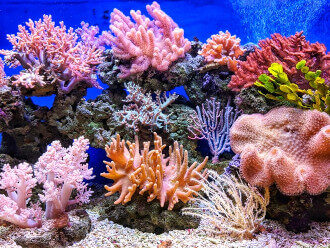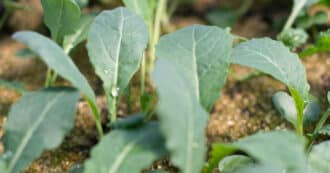By Sydney Cohen – According to the National Oceanic and Atmospheric Administration (NOAA), “Ocean acidification is expected to have negative overall effects on many marine species. This could alter marine food chains and food supply to humans. Acidification could also decrease storm protection from reefs, tourism opportunities, and other benefits that are difficult to value.”
Continue reading to learn more about the harmful environmental effects of ocean acidification, its causes, and what we can do to help prevent it.
What is Ocean Acidification?
Ocean acidification “is often called “climate change’s evil twin” and is projected to grow as carbon dioxide continues to be emitted into the atmosphere at record-high levels.” The NOAA explains that “the atmospheric concentration of carbon dioxide has increased because of the burning of fossil fuels such as coal, gas, and oil along with land use change. The oceans have absorbed roughly one-third of all carbon dioxide emissions related to human activities since the 1700s. Estimates of future carbon dioxide levels…indicate that by the end of this century the surface waters of the ocean could be nearly 150 percent more acidic, resulting in a pH that the oceans haven’t experienced for more than 20 million years.”
As the NOAA describes, “Like a sponge, our oceans are absorbing increasing amounts of carbon dioxide from the atmosphere. This exchange helps regulate the planet’s atmospheric carbon dioxide concentrations, but comes at a cost for the oceans and sea life, particularly shellfish.”
The Consequences of Ocean Acidification?
“Ocean acidification is best known for its osteoporosis-like effects on shellfish, which makes building and maintaining shells difficult for these creatures. Acidification also affects other species vital to the marine ecosystem, including reef-building corals and pteropods (tiny snails eaten by numerous species such as fish and whales).”
Ocean acidification has an incredibly harmful effect on coral reefs and coral reef ecosystems, in addition to the marine species, marine life, and marine organisms that these ecosystems service and house. The carbon dioxide emissions from burning fossil fuels both warm the ocean water, and acidify it – effects that are troublesome for our ocean life. This is why we must work fast to reduce burning fossil fuels.
Why is Ocean Acidification a Problem?
The effects of ocean acidification on an otherwise stable marine environment have started to manifest themselves over several decades. Ocean acidification literally causes sea change and threatens seawater from pole to pole in a global manner. The effects of ocean acidification on marine ecosystems prevents the formation of oyster shells, clams, lobster, and shrimp. It also affects human health, as these species, often consumed for food, are not healthy. Ocean acidification also causes growth of harmful algae that can infest these marine species, and in turn, are consumed by humans.
In a 2018 study off the Canary Islands, it was found that ocean acidification results in the “rapid growth of the toxic alga Vicicitus globosus at CO2 concentrations above 600 ppm.” According to one of the researchers, “this CO2 level could be reached in the next three to four decades if our carbon dioxide emissions are not declining rapidly.” Ocean acidification has various harmful consequences for coral reefs, marine ecosystems, and marine life, in addition to human health.
Ocean Warming
Since the Industrial Revolution, the global average temperatures are linearly correlated with CO2 atmospheric vapor levels. Since 1970, oceans absorb over 90% of the Earth’s temperature, which leads to ocean warming. In the past decade, ocean temperatures have increased about 1° Celsius on the surface in polar regions. It is further estimated that the average Earth-surface temperature will rise from 2 to 4 degrees Celsius.
What are the Effects of Ocean Acidification?
Lab studies suggest changing ocean chemistry may 1) damage living organisms whose skeleton relies on carbonates, and 2) harm organisms sensitive to acidity. The resulting damage may be detrimental for organisms in higher food chains feeding on such vulnerable organisms.
With the combination of warming ocean temperatures with the increasing acidity, certain microorganisms, such as phytoplankton, struggle to fully form their calcium carbonate shells. Because of this, their health is compromised, as is the health of the organisms that feed on smaller organisms such as phytoplankton.
Ocean Acidification on Coral Reefs
The increasingly acidic oceans also make it difficult for coral reefs to build their polyp structures. According to National Science Foundation (NSF) research in 2018, “Corals grow their skeletons upward toward sunlight, thickening and reinforcing them. The new research, led by National Science Foundation (NSF)-funded scientists at the Woods Hole Oceanographic Institution (WHOI), shows that ocean acidification impedes the thickening process — decreasing the skeletons’ density and leaving them more vulnerable to breaking.”
Struggling to Build Shells
The NSF further explains that “coral skeletons are made of aragonite, a form of calcium carbonate. Corals grow their skeletons upward by stacking bundles of aragonite crystals on top of each other. They thicken the bundles with additional crystals, strengthening the skeletons and helping them withstand breakage from currents, waves, storms and the boring and biting of worms, molluscs, and parrotfish.”
However, “rising levels of carbon dioxide in the atmosphere, mostly from burning fossil fuels, cause ocean acidification. When carbon dioxide is absorbed by seawater, it’s harder for corals to accrete their aragonite skeletons.” The research notes that the warming water temperatures, in addition to their increasing acidity, will continue to hamper coral growth.
Ocean Acidification on Marine Ecosystems
In conjunction with phytoplankton and coral polyps growth and shell-formation being challenged by the increasing acidity of oceans, another phenomenon, known as coral bleaching, occurs due to warming and acidifying waters.
Coral Bleaching
As the NOAA states, “when water is too warm, corals will expel the algae (zooxanthellae) living in their tissues causing the coral to turn completely white. This is called coral bleaching. When a coral bleaches, it is not dead. Corals can survive a bleaching event, but they are under more stress and are subject to mortality.”
Healthy coral reefs occur when “coral and algae depend on each other to survive. Corals have a symbiotic relationship with microscopic algae called zooxanthellae that live in their tissues. These algae are the coral’s primary food source and give them their color. When the symbiotic relationship becomes stressed due to increased ocean temperature or pollution, the algae leave the coral’s tissue. Without the algae, the coral loses its major source of food, turns white or very pale, and is more susceptible to disease.”
Ocean Acidification on Marine Species
One of the species affected by ocean acidification is sea urchins. “Ocean acidification could interfere with the urchins’ ability to transform calcium, magnesium and other minerals from seawater into their “tests” (the white shell left when the animal dies), spines and teeth. Other animals that can be affected include oysters, clams and other mollusks, and crabs and other crustaceans.”
Food Webs
As can be inferred, ocean acidification has a large effect on marine food webs. When species lower on the food chain are effected, that means that the larger species that consume them are no longer consuming healthy and thriving species.
Furthermore, the NOAA states that “ocean acidification may indirectly affect fish and marine mammals…through reduced abundance of marine calcifiers at the base of the food web. Changes in ocean pH also may affect reproductive success of commercially important species by reducing demersal egg adhesion or the fertilization success of eggs broadcast into the ocean.” So much carbon dioxide, released through the burning of fossil fuels, is detrimental to the food chain in the ocean, in addition to animal and human health on land. This is why we must work to slow fossil fuel use and the resulting climate change!
Looking to the Future
As carbon dioxide is reduced, it becomes buffered and the pH in oceans becomes normal again. Buffering can last for several thousand years, however, this is too long for the aquatic species that have already been affected. We must take action against climate change in order to truly make a positive impact so that our oceans can thrive again.
How You Can Contribute to Slowing Ocean Acidification!
The NOAA has recommendations for what we can do about ocean acidification. “Smart investments in monitoring and observing are critical to hedging the risks. We can‘t manage what we don’t measure, and observations are vital to providing the environmental intelligence that underpins sound approaches to countering acidification.”
Keeping Track by Measuring
“NOAA’s around-the-clock monitoring of global atmospheric carbon dioxide indicates that the rate of increase has never been higher than during the past 3 years, accelerating the ocean acidification process.”
“To prevent ocean acidification from being a game-changer, robust forecasting capabilities and public–private partnerships are needed to interpret the global picture as well as the regional and community conditions. For this reason, NOAA co-leads the pioneering, 66-nation Global Ocean Acidification Observing Network, which monitors the progression of acidification and identifies areas of highest risk.”
A Religious Perspective on Ocean Acidification
An article in Bega District News discusses how ocean acidification is harming sea life:
Increased acidity hinders shellfish from extracting the vital calcium they need from seawater to construct and maintain their shells.
Dr Elek said as acidity increased, shells would start to dissolve.
“This will especially affect tiny zooplankton such as krill and larval shellfish that are important food for many larger marine animals, including our favourite fish,” she said.
A religious person must recognize how all life is connected. If the smallest creatures in the ocean are harmed, so will the larger creatures that eat them be harmed. God has commanded us to “serve and protect” our planet (Genesis 2:15). We must protect all the creatures on planet Earth, no matter how small.
* Featured image source








